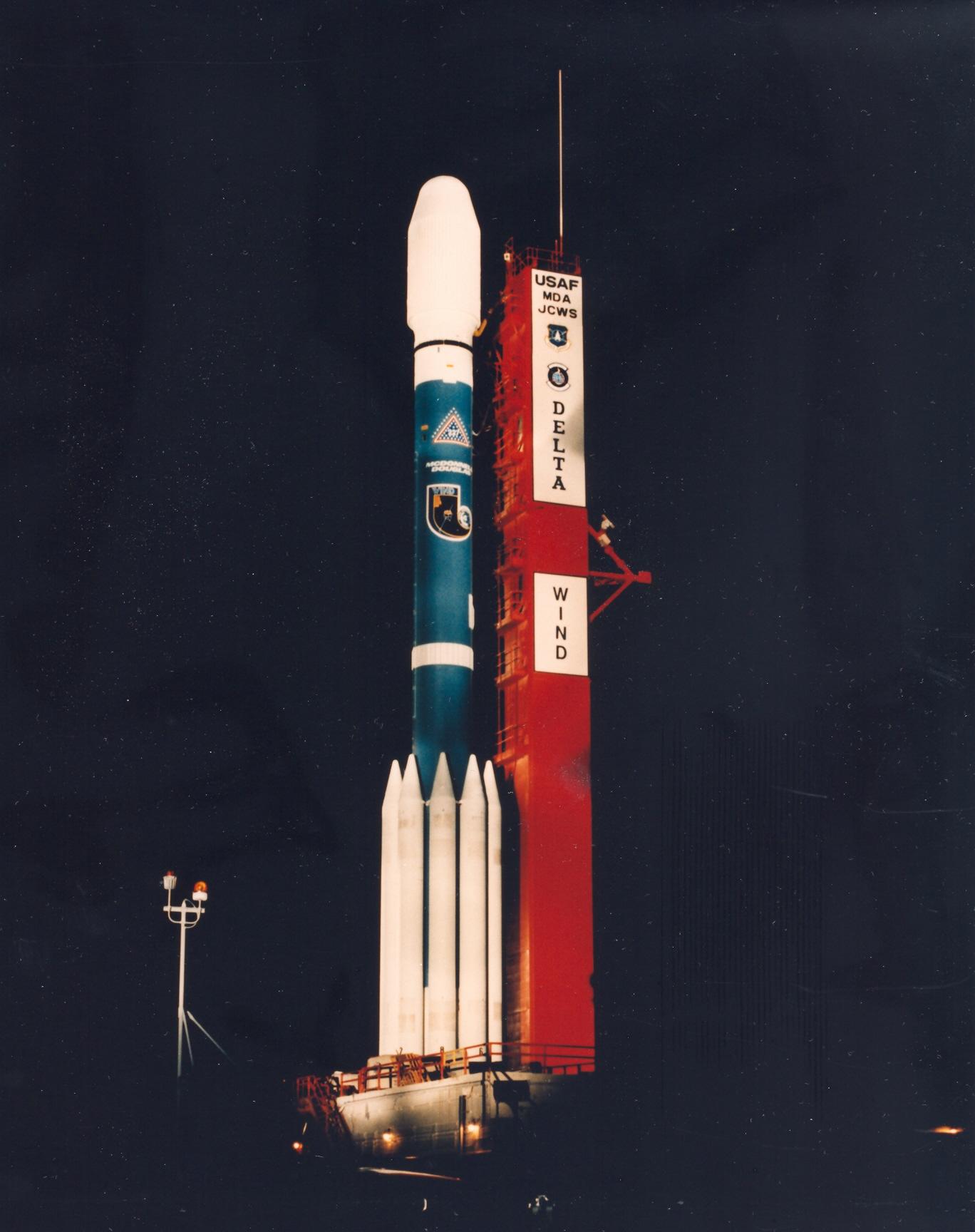
Delta II
In-activeMcDonnell Douglas (MDC)
Nov. 1, 1994
Description
Delta II was an expendable launch system, originally designed and built by McDonnell Douglas. Delta II was part of the Delta rocket family and entered service in 1989. Delta II vehicles included the Delta 6000, and the two later Delta 7000 variants ("Light" and "Heavy"). The rocket flew its final mission ICESat-2 on 15 September 2018, earning the launch vehicle a streak of 100 successful missions in a row, with the last failure being GPS IIR-1 in 1997.
Specifications
-
Stages
4 -
Length
38.9 m -
Diameter
2.44 m -
Fairing Diameter
2.44 m -
Launch Mass
231.0 T -
Thrust
4000.0 kN
Family
-
Name
Delta II -
Family
― -
Variant
7925-10 -
Alias
― -
Full Name
Delta II 7925-10
Payload Capacity
-
Launch Cost
― -
Low Earth Orbit
― -
Geostationary Transfer
Orbit
― -
Direct Geostationary
― -
Sun-Synchronous Capacity
―
McDonnell Douglas
Commercial
None
MDCNone
Delta 7925-10 | Polar
McDonnell Douglas | United States of AmericaVandenberg SFB, CA, USA
Feb. 24, 1996, 11:24 a.m.
Status: Launch Successful
Mission:
Polar is one of four spacecraft in the Global Geospace Science (GGS) program. These are among the spacecraft (Wind, Geotail, SOHO, and Cluster) in the International Solar Terrestrial Physics (ISTP) program. POLAR measures solar wind entry, ionospheric output, and the depositions of energy into the neutral atmosphere at high latitudes.
Elliptical OrbitDelta 7925-10 | Wind
McDonnell Douglas | United States of AmericaCape Canaveral SFS, FL, USA
Nov. 1, 1994, 9:31 a.m.
Status: Launch Successful
Mission:
The main purpose of the Wind spacecraft is to measure the incoming solar wind, magnetic fields and particles, although early on it will also observe the Earth's foreshock region. Wind, together with Geotail, Polar, SOHO, and Cluster projects, constitute a cooperative scientific satellite project designated the International Solar Terrestrial Physics (ISTP) program which aims at gaining improved understanding of the physics of solar terrestrial relations.
Heliocentric L1Long March 11
Unknown Payload
Oriental Spaceport mobile launch ship - Sea LaunchDetails TBD.
Falcon 9
Starlink Group 11-14
Space Launch Complex 4E - Vandenberg SFB, CA, USAA batch of 28 satellites for the Starlink mega-constellation - SpaceX's project for space-based Internet communication system.
Falcon 9
Starlink Group 6-81
Space Launch Complex 40 - Cape Canaveral SFS, FL, USAA batch of 29 satellites for the Starlink mega-constellation - SpaceX's project for space-based Internet communication system.
Electron
The Nation God Navigates (iQPS Launch 5)
Rocket Lab Launch Complex 1B - Rocket Lab Launch Complex 1, Mahia Peninsula, New ZealandSynthetic aperture radar Earth observation satellite for Japanese Earth imaging company iQPS.
Ariane 62
Sentinel-1D
Ariane Launch Area 4 - Guiana Space Centre, French GuianaSentinel-1D carries an advanced radar technology to provide an all-weather, day-and-night supply of imagery of Earth’s surface as part of the Sentine…

